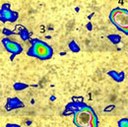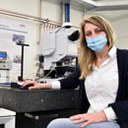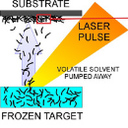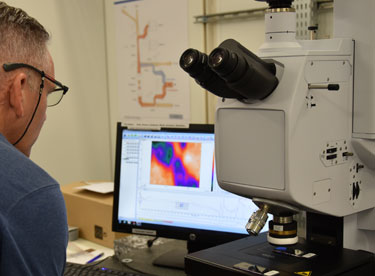
Researchers of IQAC-CSIC, in collaboration with the ALBA Synchrotron, demonstrate that African hair has more lipids that are highly disordered. This distinction with Caucasian and Asian hair might be relevant to develop new ethnic hair-care products.

Cadmium and mercury are toxic metals that accumulate in the environment and represent a threat to photosynthetic organisms of polluted ecosystems. A research team from the Autonomous University of Madrid has studied the effects of these harmful metals in the microalga Chlamydomonas reinhardtii, a soil-isolated unicellular photosynthetic microorganism. Using synchrotron infrared microspectroscopy at MIRAS beamline in ALBA, researchers have identified multiple metabolic alterations in the main types of biomolecules (carbohydrates, proteins and lipids) of the microalga caused by cadmium and mercury. These insights help to optimize approaches for metal descontamination.

Researchers from the UAB and IDIBELL have analysed Alzheimer’s disease brain samples at the ESRF and ALBA Synchrotron to characterise two types of amyloid plaques with differences in metal ion composition and in their levels of oxidised lipids. The results could lead to new insights into the development of the pathology.

An experiment led by Tanja Ducic, scientist at the MIRAS beamline of ALBA, is analyzing live cells with synchrotron-based Fourier Transformed Infrared (FTIR) spectroscopy to identify crucial potential biomarkers in order to target them and to help develop new therapeutic strategies.

Researchers have used, for the first time, a combination of cerium oxide nanoparticles and manganese metal organic precursor in the laser targets for the synthesis of a hybrid material. The used laser deposition technique allowed the versatile fabrication of high-performance supercapacitor electrodes. Supercapacitors are important for their fast and reversible use of energy, high power density, long cycle life, low maintenance cost, and environment-friendly nature. Measurements at the MIRAS beamline of ALBA allowed the identification of the organic part of the composite, especially the chemical groups present at the structure of graphene and carbon nanotubes, which highly influence the functional properties of the material.






